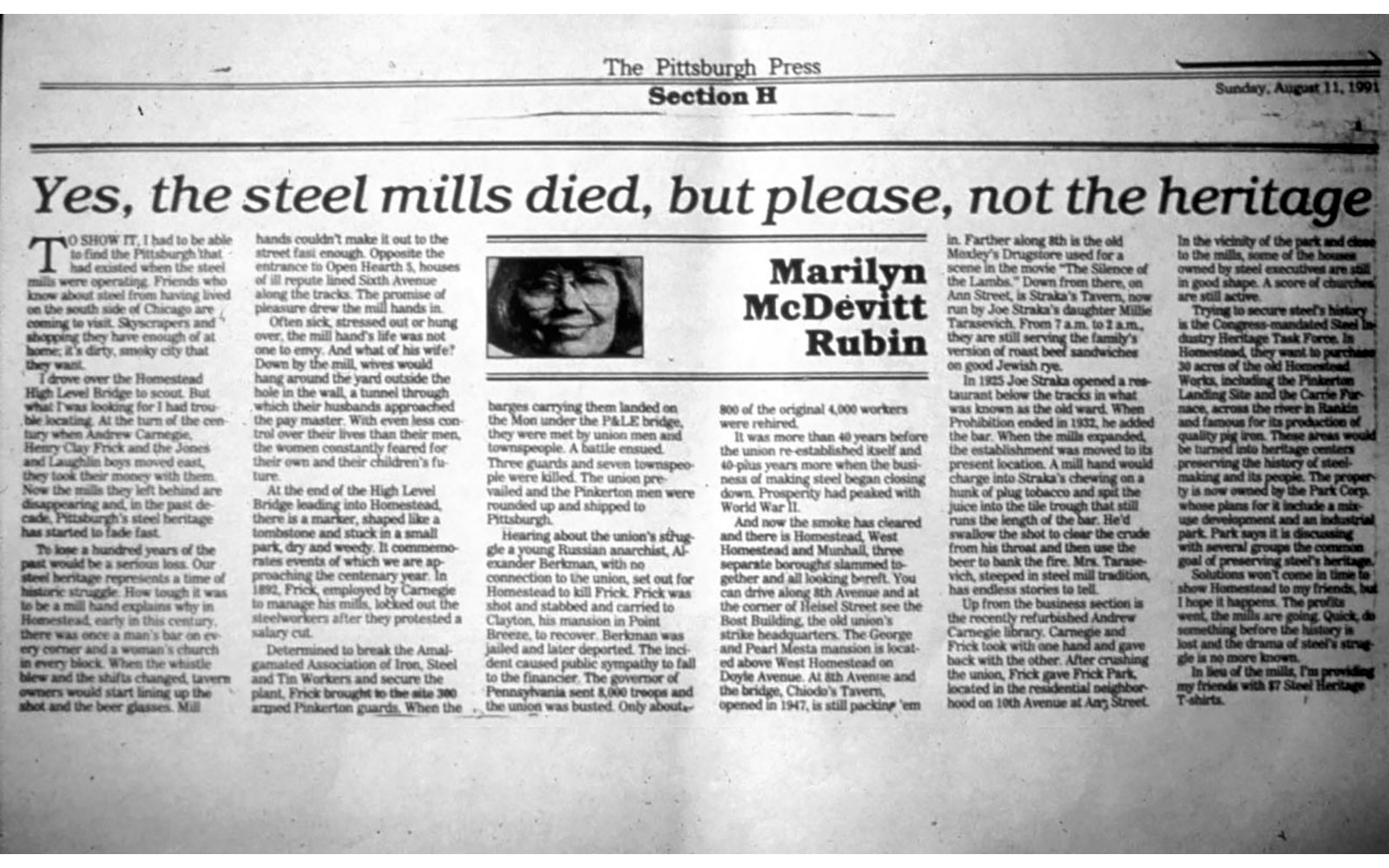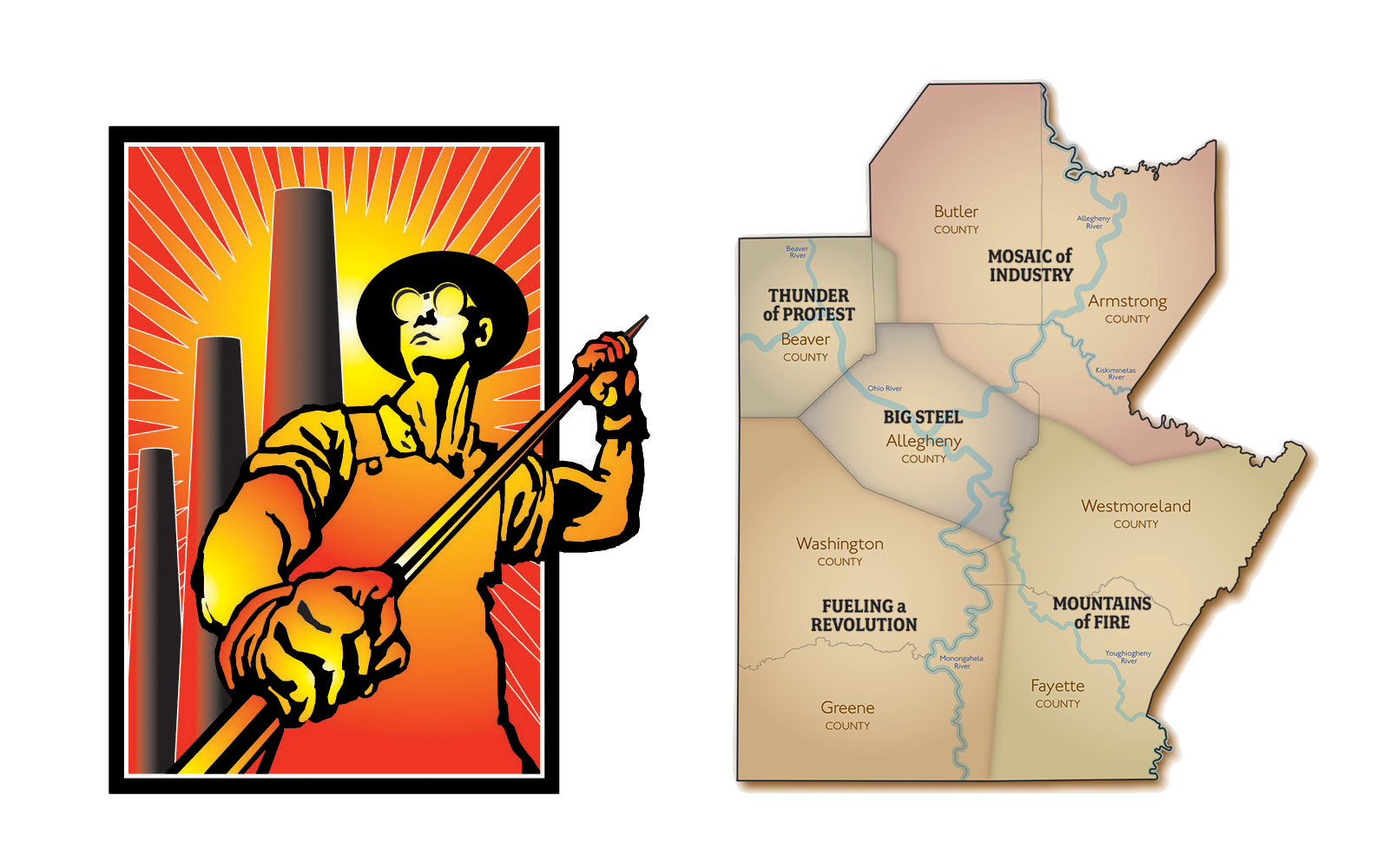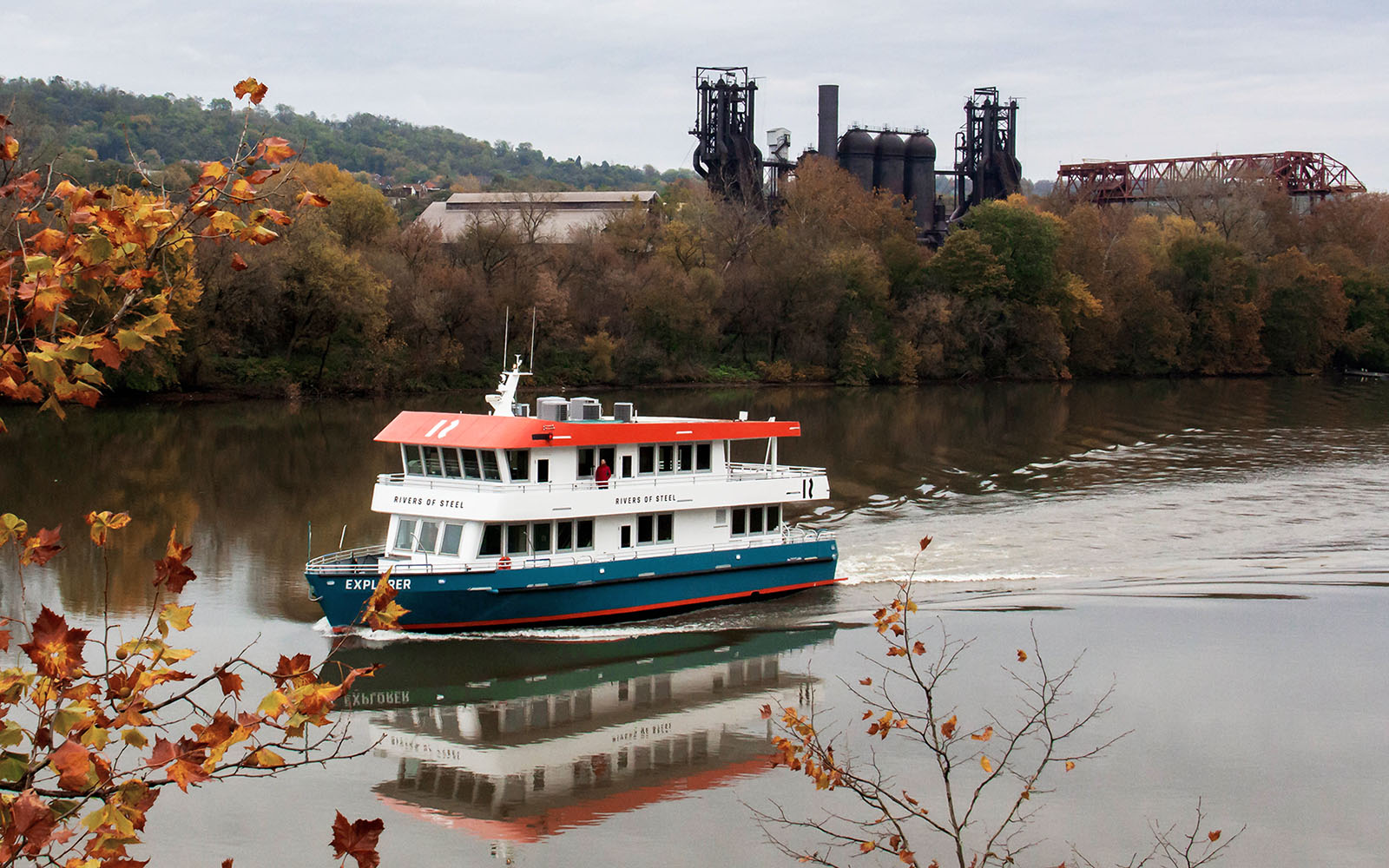Our Story
Rivers of Steel’s journey began in the aftermath of the collapsed steel industry. In 1988, a group of citizens got together, united by their concerns that with destruction of the shuttered mills an important part of our region’s culture was in danger of being erased, too.
The prevailing sentiment at the time was not one of reverence for the industry; rather, it was a stew of mixed emotions—anger for the way things went down, loss of identity in the face of joblessness, and fear of an uncertain future. The emotional landscape was too raw for most folks to want to celebrate what the steel industry once was, especially when it was painfully obvious that this ‘industrial downturn’ reflected permanent change.
Long story short: those citizens organized as a task force. Four years later, the nonprofit organization that was to become Rivers of Steel was established to carry the torch of Big Steel and its related industries—not simply telling the companies’ stories and the products they made, but the stories of the men and women who worked there.
It is a legacy was too important not to save. Relics and remnants were captured, so were oral histories. The scope of which grew beyond the workers themselves, encompassing the neighborhoods they represented—their languages, their churches, their traditions and recipes—and sowed the seeds of what was to become Rivers of Steel’s archival, cultural conservation and exhibition programs.

Article from The Pittsburgh Press, August 11, 1991
A National Heritage Area is formed
These services provided helped local communities to transition into a new era. But to revitalize the communities more work still needed to be done. A vision for the future was necessary, as were economic resources.
So the Steel Industry Heritage Corporation—the original name of Rivers of Steel—petitioned state and federal officers to create a Heritage Area, a region recognized for the national importance of its historic landscape. The case was supported by a vision to “weave together the cultural and historical resources in a way that makes our heritage visible, exciting and accessible. Its timely implementation will have a major impact on the regional economy by promoting tourism and economic development.” In 1996, the Rivers of Steel National Heritage Area was created by an act of Congress and the Commonwealth of Pennsylvania. With that action, a new era began.

Growth through heritage tourism
In the intervening years, that vision came to pass . . . a number of industrial sites were saved, and became the heritage attractions that Rivers of Steel manages today. Three would later be designated National Historic Landmarks, including The Bost Building in Homestead, the W.A. Young & Sons Foundry and Machine Shop in Rices Landing, and Carrie Blast Furnaces #6 & #7 in Swissvale and Rankin. Rivers of Steel also stewards the historic Pump House and Water Tower, site of the 1892 Battle of Homestead, located in Munhall.
Community revitalization projects
Through its grant program, Rivers of Steel has funded many projects in partnership with local communities. Brownfields have been redeveloped, main streets revitalized, river landings made accessible, recreational trails created, and much more. This work continues today. Each year Rivers of Steel grants funds to regional nonprofits for projects that sustain a sense of place through the preservation and interpretation of the heritage, cultural and recreational assets of the region.
As an organization, Rivers of Steel is resilient, reflecting the hard-working character of the people of southwestern Pennsylvania. Each project, each attempt to stop demolition of a historic place, or petition for National Historic Landmark status, is another achievement for the benefit of the region at large.
Thirty plus years on, the prospects for Pittsburgh and southwestern Pennsylvania have improved, some areas more so than others. So, while we have had many great successes, the work is not yet done.

Heritage through the lens of art . . . and science!
As Rivers of Steel evolves, so does its methods. Interpretation through the arts has become an essential way to engage visitors, at our attractions and in communities throughout the region. Narratives have expanded. The industrial story is included, but so is a postindustrial one. Through initiatives like Partners for Creative Economy, Rivers of Steel is fostering the economy by partnering with creative professionals, enterprises, communities to establish the region as a thriving destination.
In an era when science and technology are, once again, driving forces in the region, Rivers of Steel has expanded its educational programs, helping students to discover how southwestern Pennsylvania’s natural resources have shaped our industrial past and cultural heritage—and how our environment today impacts our region’s future. In 2016, Rivers of Steel acquired RiverQuest, a nonprofit that focused on environmental science education, along with the Explorer riverboat, the vessel which hosted the organization’s programming. Today, Rivers of Steel continues to offer the award-winning student programs which RiverQuest had been known for, and has pursued more opportunities on the boat, offering heritage-based sightseeing tours and arts-based programs and workshops.
Experiences and impact
Rivers of Steel was founded on the principles of heritage development, community partnership, and a reverence for the region’s natural and shared resources. It continues to strengthen the economic and cultural fabric of western Pennsylvania by fostering dynamic initiatives and transformative experiences, whether it is through its attractions and programs or its work behind-the-scenes as a pivotal partner in economic redevelopment.
Today there are many ways to experience Rivers of Steel. What’s common among them is the passion with which each program and project is realized—and the assurance that each engagement will broaden your perspective.
Learn more about Rivers of Steel’s attractions
that showcase the artistry and innovation of our region’s rich heritage.




